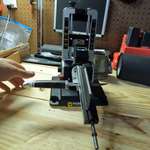
December is approaching, which means frigid temperatures and snowfall aren't far behind. Cause for dismay? Heck no, it's a great time to pursue grouse amidst leaf-free aspens, and pheasant concentrations are more easily found among shelter belts.
However, in the event there's snow on the ground, it's important to ensure your bird dog is properly groomed for a day of trouncing through the powder. Failure to do so can result in snow packing like ice between the dog's pads. That's not only uncomfortable for the dog, it can cause mild injury--not to mention frustration on the part of hunters stopping every 15 minutes to "de-ice" paws. So, here's how to winterize your bird dog.
Trim Between Pads
Using scissors and/or a small electric clipper, trim all hair from the bottoms and sides of your dog's paws so that no fur extends beyond them. Then carefully trim the hair between his pads, ensuring none protrudes to the ground. This requires care, of course, particularly if your dog is a squirmer. However, it's important: Trimmed paws are far less prone to snagging snow and ice. Don't worry, his feet won't get cold.
Clip Nails
You may think long nails will give your dog added traction, but they're actually counterproductive. Excessively long nails actually decrease grip, and cause the pads to open as the dog runs, trapping snow. Therefore ensure they're clipped about every two weeks. Kennel dogs can get away with less frequent manicures, as cement surfaces tend to keep their nails filed down.
Despite these precautions, occasional snow-packed pads are unavoidable. However, I've encountered them far less frequently since adhering to these two tips.




































